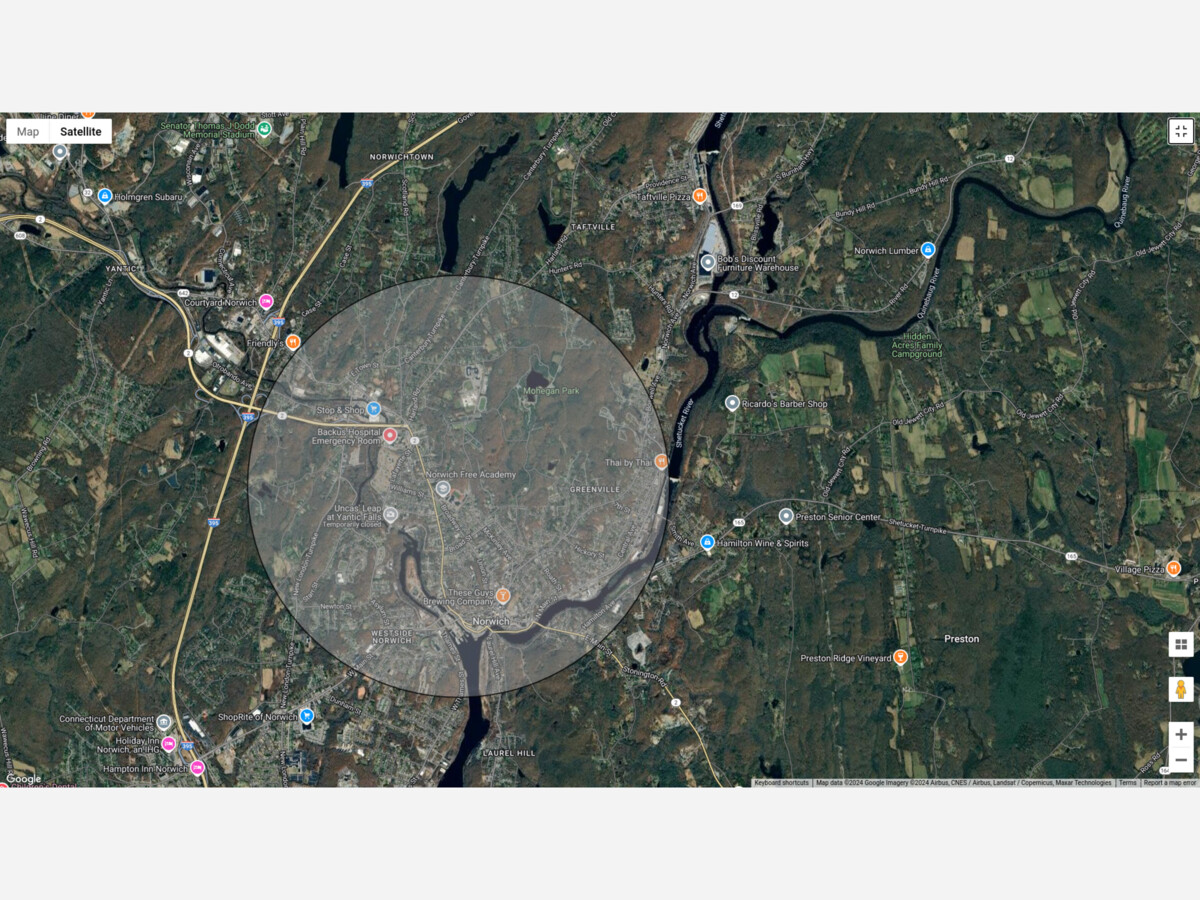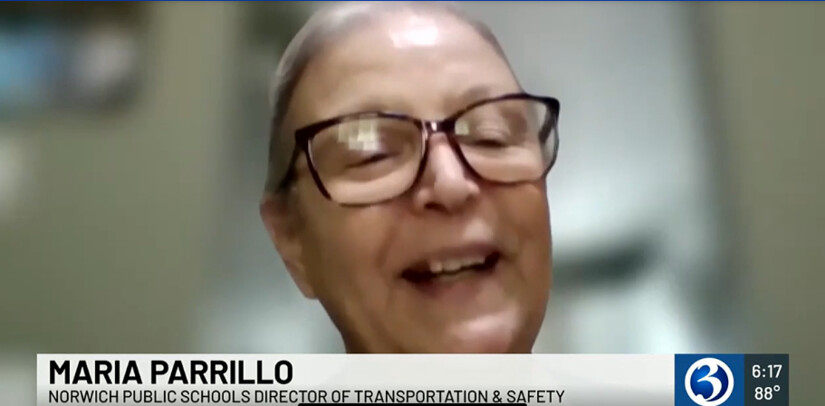Image


There was some excitement and uproar when school was back in session this past week. According to the Norwich Board of Education, the policy to restrict bus transportation for students who lived within 1.5 miles of the school was "saving money".
Walkers within 1.5 miles of Norwich Free Academy
School was off to a rocky start at Norwich Free Academy this term. In addition to no free breakfast, students who previously sat on the school bus were no longer getting to school by bus due to enactment of a transportation policy.
According to WFSB the policy existed for a year but was not enacted until this year.
WFSB interviewed NPS transportation director Maria Parrillo who said with a smile:
"It's going to save money. Money that can be spent for teachers." She went on to discuss the money going to learning.
2 routes were eliminated saving 180k. Approximately 400 students were cut from transportation.
According to WFSB, who interviewed NPS Transportation Director Maria Parrillo
"explained that the district is adhering to Board of Education rules.
“We are seeing significant savings with the new mile-and-a-half policy,” Parrillo said.
She also mentioned that there might be consideration to extend the walking distance to two miles next year
Keep in mind, the state does compensate transportation expenses up to 60%. Also keep in mind schools receive about $25k per student per year.

Screenshot of WSFB interview with Maria Parrillo, NPS transportation director. 2 bus routes slashed and 400 students walking now facing hazardous conditions.
The SDE has guidelines for school district transportation policies, but districts have discretion whether to use them and abide by law. The guidelines recommend that districts consider the following in developing their policies: (1) a student's age, (2) the walking distance to school, and (3) the existence of hazardous conditions.
Under the guidelines, walking distances greater than the following are considered hazardous at the specified ages:
1. for a student under age 10 or enrolled in grades K-3, 1 mile;
2. for a student aged 10 to 14 or enrolled in grades 4-8, 1.5 miles; and
3. for a student older than age14 or enrolled in grades 9-12, 2 miles.
That 2012 set of guidelines include what is considerated hazardous.
Here is a short list.
The guidelines cite various other conditions considered hazardous, including
Other Hazardous Circumstances
1. for children under age 10 or K-3, the absence of a pedestrian crossing light or crossing guard where three or more streets intersect, and at crossings where there are no stop signs or crossing guards and traffic volume during school walking hours exceeds 60 vehicles an hour;
2. for children over age 10 or grades 4-12, the absence of a traffic light, stop signs, or a crossing guard where three or more streets intersect and the hourly vehicle count during regular walking hours exceeds 90;
3. for all pupils, any street with a speed limit over 40 miles per hour which does not have pedestrian lights or crossing guards or other safety provisions where pupils must cross; or
4. for all pupils, the usual or frequent presence of any nuisance such as open man-holes, construction, plowed or piled snow making the walkways unusable, loading zones where trucks can park on walkways, commercial entrances and exits where cars are crossing at more than five miles per hour, and any nuisance that is hazardous or attractive to children.
A street without sidewalks or raised walk areas is considered hazardous if any of these conditions exists:
A street without sidewalks or raised walk areas is also considered hazardous if line of sight visibility and speed limits precludes vehicle braking and stopping in accordance with the Connecticut Drivers Manual and the Department of Transportation's Design Division design standards.
Walkways, paths, or bridges adjacent to railroad tracks are considered hazardous unless a suitable physical barrier exists between pupils and the tracks along the entire pedestrian route. Routes that cross tracks carrying moving trains during normal school walking hours are considered hazardous unless there is a crossing guard, an automatic control bar used by pupils under age 10, or a bar or red flashing light operating when the crossing is used by pupils over age 10. Lakes, ponds, streams, culverts, waterways, or bridges are considered hazards unless a fence or other suitable barrier separates children in grades K-4 from the water.
These situations are also considered hazardous for walking students:
1. for pupils in Grades K-4, the area adjacent to the roadway, walkway, sidewalk, or bridge drops off by three or more feet for each four feet of travel distance on either side and there is no fence or other suitable barrier to protect the children;
2. the street, walk, or path designated as a walking route for all pupils passes through an area which has a history of "aggressive acts of molestation resulting in actual or threatened physical harm or moral degradation" during normal student walking hours; or
3. for children in Grades K-8, walking to or from school or the bus stop occurs 30 minutes before sunrise or 30 minutes after sunset.
Because definitely would be forcing students to walk in the dark before sunrise to get to school. In some cases sunrise happens after NFA starts the day - like in October and the end of November.
So, students who are not privileged enough to get a ride or money for the SEAT bus or Uber will be walking in the dark with heavy books. By heavy I refer to 1 History book of over 1300 pages. That's just one book - in our digital information age. Acc0rding to one student, apparently, students do not have lockers except in gym.
The guidelines specify that pupils with physical handicaps or health conditions rendering them unable to walk to the bus stop or school, as determined by their physician and the school medical advisor, must receive appropriate transportation. They also state that special education pupils should be judged on an individual basis.
The first full day of school, at least one bus was not full and drove past students walking.
Just seems like poor planning. Put the community and our children first. This really should just be a Job or Business. These are our children.
The one thing I can say is these students, if they survive the winter will be strong and unstoppable as long as they work on emotional intelligence. They can use this experience to rise to the top. People will ask how they are so strong and capable. They can respond, "I got Norwiched".
You know what I mean.
Norwich Board of education policy on transportation for 24-25 school year states students who live within 1.5 miles of the school will not have bus transportation. Hazards exist. Walking in the dark is hazardous. Student walking past registered sex offenders and in areas of aggressive behavior is a hazard.. no sidewalk, speed of car travel and frequency is a hazard.
Regardless of whether we can do anything about it depends on several variables.
Bottom line: Leadership must change. Remember to register to vote and vote the current BOE members OUT. This type of action putting money over the safety and convenience of our students, our future is unacceptable. If the school district is saving 180k, by limiting bus service to 400 students, that amounts to less than $500 a student and the district receives approx. $25,000 per student. Run the numbers.
Maybe, we should start homeschooling or finding other school choices.
NFA is a great school. However, some community members were concerned about truancy. Yes. This could impact those 400 families.
I think in good faith, once a month, the board of ed should walk 1.5 miles to NFA and back. With a full backpack, in the dark. Enjoy.